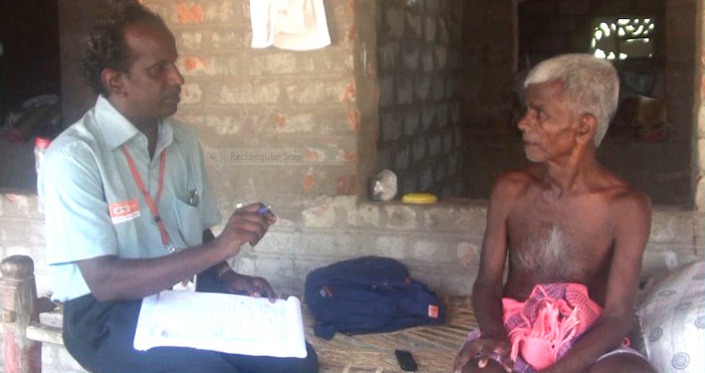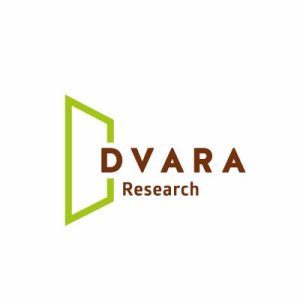The Wealth Management Cross-Functional Team (comprising Amit Shah, Deepti George, Shilpa Sathe, Nitin Chaudhary, Suyash Rai, Bhaskar, Chandrachudan, Viji, Anil, Dave and Bindu) have been working on crystallising the principles of wealth management based on finance theory and driving implementation of these, with the support of KGFS teams and Guru.
An important component of the process re-design was regarding the way we collect customer information in the Customer Management System (CMS). The concern has been that this is a fundamental process whose quality determines the quality of financial advice we give the customer. For example, if we are not aware of an elderly member of the household or a non-resident dependent member, we might grossly under-estimate the liquidity and insurance needs of that household.
This week, the team set about piloting a new process designed to ensure higher-quality customer data. In this pilot process, enrolment is split into two phases. Phase 1 entails the customer coming to the branch and providing very basic demographic information and she gets photographed and biometric Ids taken.
At the end of this brief process, we ask the customer when we can come to his/her house for a more confidential and detailed conversation. This is Phase II enrolment. During this phase, the Wealth Manager sits down with the relevant household members and has a detailed conversation that flows asset by asset (children, house, land, livestock, others). Within each asset, we try to understand ownership, income and expense flows associated with each, riskiness, and finally the goals and aspirations with respect to that particular asset (For ex: I want to renovate my house and put a tiled roof in the next two years or I want to admit my daughter who is currently in the Xth to engineering college). Based on this information, we then generate a Household Financial Well-Being Report that is then the basis of all product discussions and sale to the customer.

Prof. Viji talking to a customer

Wealth Manager converses with a customer
This week, the team conducted 15 such detailed household interviews and will go back to the same households in the next few weeks with the detailed plan. As always, the resilience and ambition of our customers humbled and inspired us. Watch this space for updates on the wealth management process re-design and talk to anyone in the team for details.



5 Responses
Bindu et al-
This seems to be an excellent approach. Does it makes sense for the WM to be accompanied by the AGM or Senior WM for the first several home visits or for the first six months of employment (determine 'certification' criteria)? This would free the WM to focus on the conversation and establishing the relationship with the client while the other person takes notes or enters info. Is this process paperless? After the in home interview the AGM or Senior WM can provide immediate feedback and suggestiong to the assigned WM.
Deidra, thanks for the excellent comments. Makes a lot of sense for this to be a process that the WM observes and graduates into with guidance from the seniors. We are currently piloting this process in one branch only where we are bringing in senior WMs for the conversation with us taking notes. The conversation is currently audio-taped and transcribed by the second person, we need to figure out how to pull out info from here to the financial well-being report.
Dierdra, Thanks for your encouragement as we move forward in the direction of meeting the customer where he is literally and figuratively. As Bindu has pointed out we are piloting this exercise in one branch. We are aware of the process issues as we enter into a household's private space. So, it is very important that our WM is guided by a senior WM/AGM during the initial months and also to do random audits to ensure WMs are adhereing to codes of conduct.
In the initial training, we emphasised the need to respect and to be sensitive to our customer's life choices ( examples being- being a second wife, walking out a marriage ) , empathise with them when they are going through a tough phase ( chronic /terminal illness of a member, business losses) and celebrate their successes.
We also drove home the point that while we are responsible for improving the financial wellbeing of our customers, there is a need to let go. We cannot get into the act of rescue and start deciding on behalf of our customers. We wouldnot want our WMs to suggest the household to buy a cow or set up a teashop. We are more like coaches /mentors and it is ultimately the houshold that needs to make choices and to act.
What was wonderful about the experience was that our WMs instinctively picked up the process up and could do it effortlessly. I think the best compliment came when a customer ( a very brave woman, we salute her) told Bindu and her team that was the first time in 20-30 years that she shared such intimate details of her life and that she felt relieved as she had someone listening to her.
To ensure we continue to maintain such high standards , we have to have a senior person to take ownership for training and giving feedback to WMs in the field and constantly monitoring them as recommended by you.
The tech team is working on viable options to capture data realtime in the field. The task in front of us is to convert data into financial wellbeing report that is meaningful to the household and to take this dialogue forward.
One thing I just wanted to make sure to add to this stream was something that Viji shared with me about the change that the Wealth Managers are feeling from this process.
Viji told me that a WM's she had been training came back to her the following morning and expressed a much deeper sense of concern about the households they had interviewed the previous day. The WM told her that collecting the expanded set of data using the new method made the challenges that the households faced seem more real because it became easier to connect the data with the things that the household/customer did.
When I heard this story it made me even more confident that we are on the right path. When the Wealth Managers feel this degree of personal responsibility and are confident in their ability to act, then I believe we are well on our way. This new activity-based process seems to be a key ingredient in getting that kind of engagement from the Wealth Managers.
There are also three other insights from this wealth management process design exercise that I want to share:
The first is that the challenge we face here is far more difficult than a wealth manager would face in talking to a high net worth individual. In working with high net worth individuals the day-to-day consumption data is dwarfed by the income numbers. Among our clients we do not have this luxury. This makes it even more important that we have very high quality data. We need to be very careful where we make assumptions as opposed to where we collect data from the household or at the branch or hub level.
The second is that what we are doing is going to have a profound impact on the village. We are really listening to people. We are giving them a mirror to look at their lives. This process is cannot help but make the clients more emotionally open. There will be a deep rapport built between the clients and the WM's. The WM's — like a therapist — will feel a tremendous emotional weight from getting this much information about people's lives. We are going to have to work with the Wealth Managers to give them an appropriate way to deal with all of this emotional intensity. In addition, the degree of openness that this dialogue creates makes it even more important that we are very careful in what we propose to the client.
The third is that we need to be very deliberate about when we are in dialogue with the client and when we diagnosing the client. Wealth management requires both. It is only when we have come to a shared understanding with the client about "what the client's current reality is" and "where the client wants to go in the future" that we can start diagnosing the client. If we move to diagnosis before we have come to a shared space through dialogue, then we are selling like everyone else.
Of course, there is more, but it is time to go do 🙂
Thank you much for sharing this article; it was very valuable in many aspects.
Good luck and best wishes. Please post updates